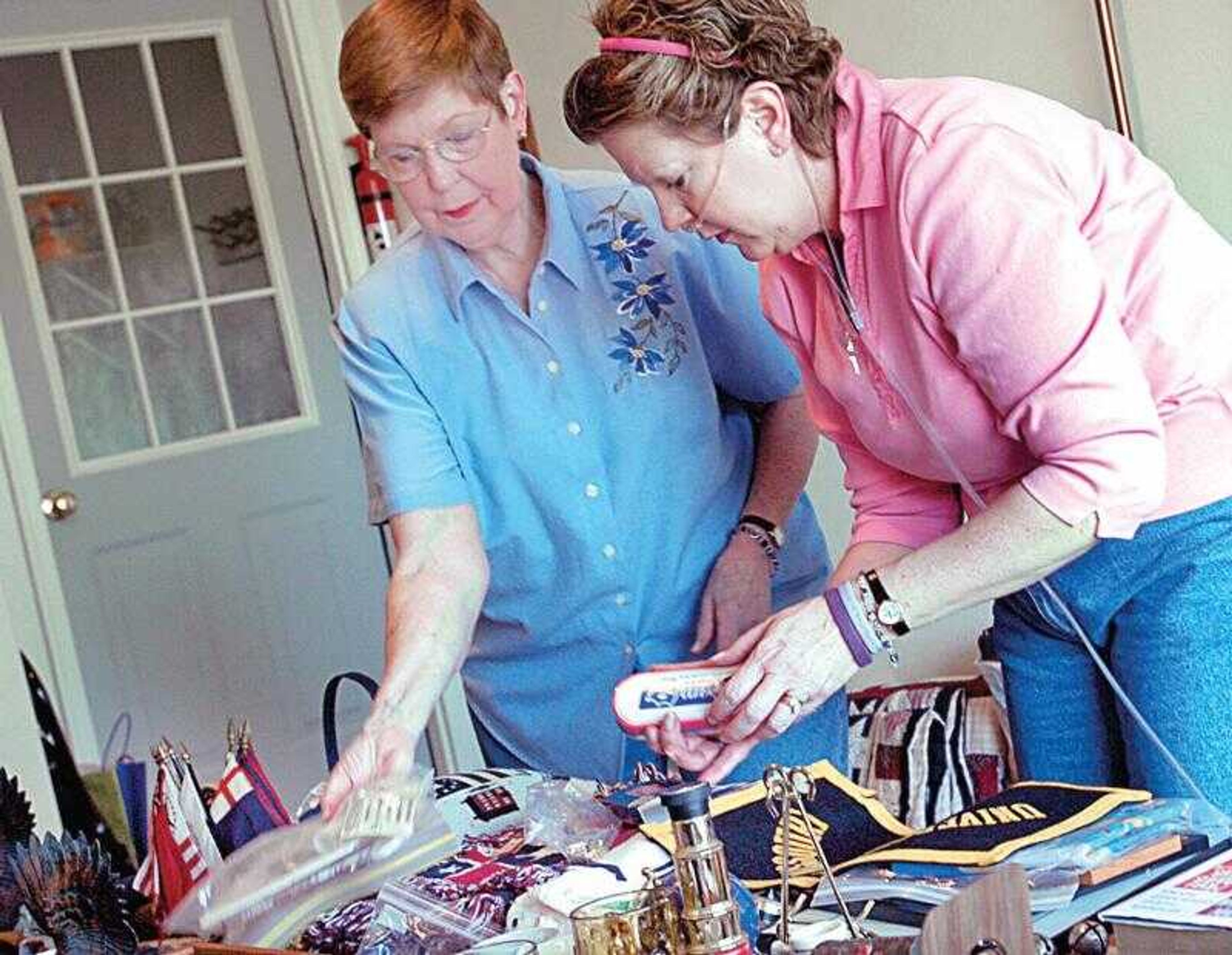A Southeast Missouri native who awaits a double-lung transplant and suffers from a fatal disease still finds plenty in life that's uplifting.
Marla Dreyer Hamlin, 49, of Chesterfield, Mo., is one of only about 1,000 women with lymphangioleiomyomatosis, a progressive destruction of healthy lung tissue that results in the need for oxygen therapy -- and eventually a transplant.
Her mother, Betty Deardorff, of Jackson, left her job at Saxony Lutheran High School to take care of Hamlin while she waits for the transplant. Hamlin needs her mother to help her now with day-to-day living. Yet through it all, she finds aspects of her life she calls "God things."
LAM strikes only women of child-bearing age, and survival depends on the transplant. Hamlin talks in terms of when she gets new lungs, not if she gets them. She has that kind of faith.
Thirteen years ago, Hamlin began having trouble breathing and suffered lung collapses. Both lungs collapsed three separate times, requiring surgeries that attach them to the chest cavity.
An important "God thing," Hamlin said, happened when she left Frohna and moved to the St. Louis area, where she has access to a pulmonologist.
"I was his first LAM patient," Hamlin said. "He and I learned together. Thank God he had seen it in a book."
Women who are diagnosed with LAM are usually given 10 years to live, and by the time Hamlin knew what she had, her 10 years were up.
"I started giving my things away," she said. "It was a very devastating time." But Deardorff and Hamlin don't think in terms of the devastation and the disease it brings; they see opportunities for change.
Deardorff is moving to an apartment within minutes of Hamlin's home. She also will be moving closer to her other two daughters and is looking forward to spending more time with her grandchildren. She sees the move as a positive step toward Hamlin's recovery.
"I don't see it as a sacrifice," she said. "This is something I feel God is directing me to do, but also I need to do this for her."
Although LAM was discovered in Germany in 1937, only in the last 10 years has there been any research resulting in any knowledge about the disease, and "more has been done in the last three years than had been done in previous history," Hamlin said. "Women were being misdiagnosed, but there was nothing out there."
Sue Byrnes, director of the LAM Foundation in Cincinnati, said because many doctors are unfamiliar with LAM, there are more women suffering from it who have not yet been diagnosed. It often takes four years, she said, for a diagnosis to be confirmed.
While she waits for either a transplant or a breakthrough, Hamlin counts her "God things," including her golden retriever, Bailey. She was told that if she wanted a dog, she would have to find one before her transplant to accustom herself to pet dander. She believes there is a connection that led her to this particular pet.
"Her prior owner had to give her up. He had had a heart transplant and couldn't take care of Bailey any more. It was a God thing."
And, she said, it was certainly no coincidence that she and her husband, Ron, had planned to name a dog Bailey when they got one.
Because of her weakening condition, Hamlin had to retire from her job as a speech pathologist. "God planned this," she said. "What better woman to spread the word than one who loves to talk?"
So she waits, knowing that it will take a gift from someone who lost a life to save hers. From talking with other LAM women, she has learned that the first three months after a transplant are the worst, requiring constant care while her body adjusts to the medications she'll need to take. She has to lose six pounds to be in to shape for surgery, but has been told that the after-surgery drugs will put it back on and more. Medicare and supplemental insurance will pay for the transplant, but it will take faith to come up with the $3,000 per month it is estimated she will need for the drugs.
"I have a great family and friends who said they will do fund raisers, if needed," she said.
The transplant is not meant to be a cure, she said, but a change of circumstances. Her immune system will be affected permanently. She will always have to be cautious about her health, but eventually she will be strong enough to do physical things she once enjoyed.
"LAM women tell me after the transplant taking big breaths will be awesome," she said. "My quality of life will be so good after it."
lredeffer@semissourian.com
335-6611, extension 160
Connect with the Southeast Missourian Newsroom:
For corrections to this story or other insights for the editor, click here. To submit a letter to the editor, click here. To learn about the Southeast Missourian’s AI Policy, click here.








